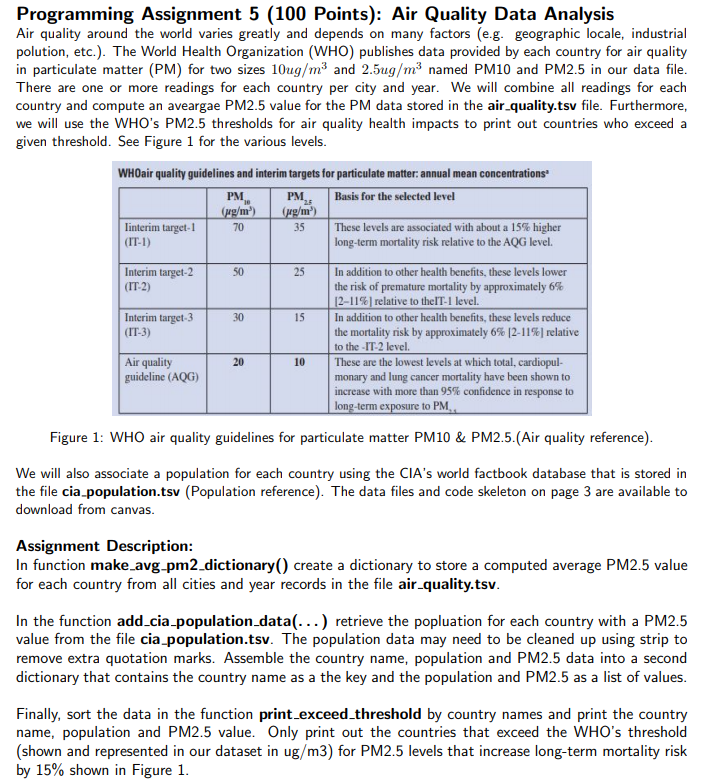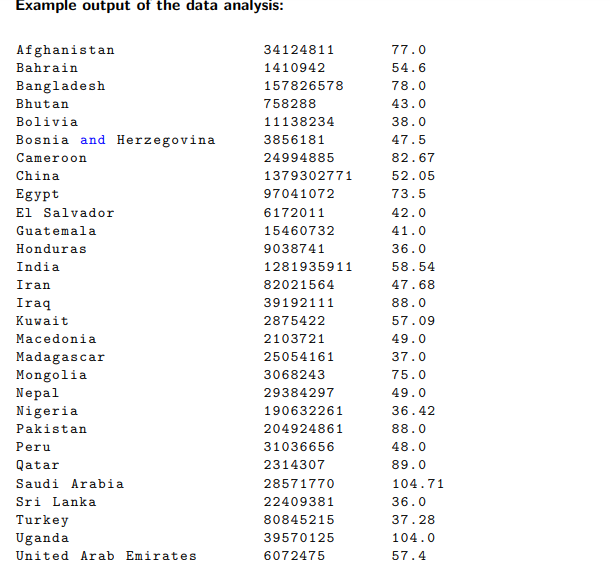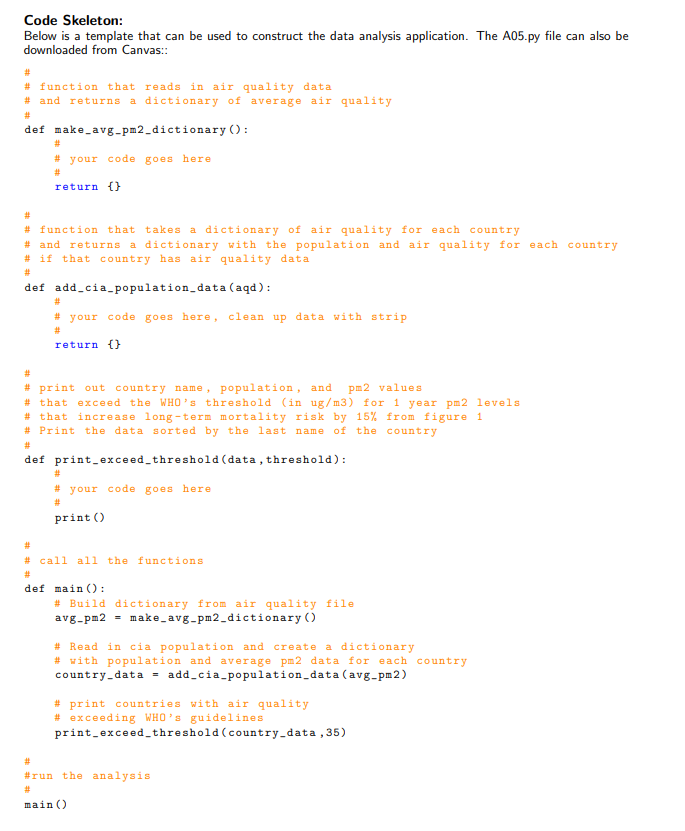Answered step by step
Verified Expert Solution
Question
1 Approved Answer
Using Python 3, please write the following code using Dictionaries. Since the assignment requires .tsv files, I can't attach them via Chegg, so I've attached
Using Python 3, please write the following code using Dictionaries. Since the assignment requires .tsv files, I can't attach them via Chegg, so I've attached them through my Dropbox link. Please download the .tsv files and help me with the following assignment: https://www.dropbox.com/s/k7tavv6sf55k7s4/air_data.tsv?dl=0 https://www.dropbox.com/s/90ybeltxa6lc81e/cia_population.tsv?dl=0 


Step by Step Solution
There are 3 Steps involved in it
Step: 1

Get Instant Access to Expert-Tailored Solutions
See step-by-step solutions with expert insights and AI powered tools for academic success
Step: 2

Step: 3

Ace Your Homework with AI
Get the answers you need in no time with our AI-driven, step-by-step assistance
Get Started


